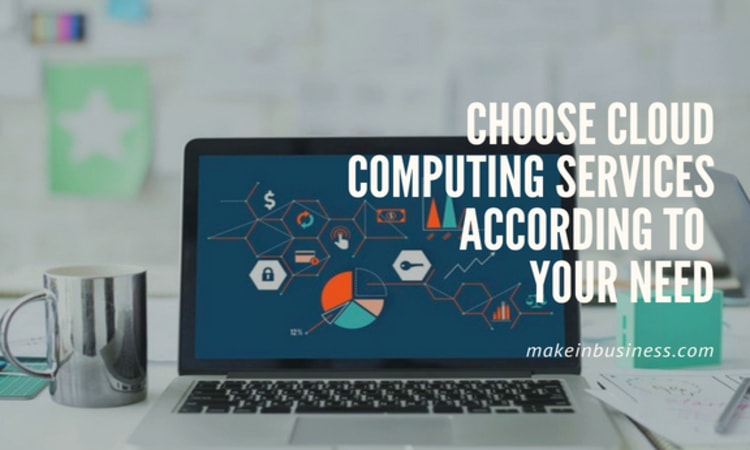The Benefits of Cloud Computing Integration for your Business

In a nutshell, the term ‘cloud computing’ refers to the practice of storing and accessing data online rather than using your own hard drive. By registering with a platform and uploading files onto it, you can then easily access them from all your devices. What is more, you can share information across gadgets, and with other people as well.
Integrating Cloud Computing

There are multiple cloud computing services available, and they are created by big names in the tech game such as Google or Microsoft. Take your time and read in-depth reviews and make a better-informed decision based on important aspects such as company size, niche, the amount of data that needs to be handled, and many more.
This is the first step in integrating cloud computing into your business model. After acquiring access to cloud storage, the next stage of the process has to do with employee training. Unless they had worked in this manner before, they won’t know where to start.
Bringing the entire company up to speed with cloud computing methodology and practices will guarantee that this new approach is as efficient as it can be. What is more, this will also minimize the risk of security breaches, which leads to an overall higher rate of success. And speaking of data protection, this is perhaps the most important aspect to account for.
By using password protection and choosing a platform with a strong encryption system, you are paving the way towards a secure cloud for your business. In addition to this, always limit access to valuable data. Select the people who view it carefully, and you will be safeguarded from harm. After doing so, the benefits will appear in no time at all.
The Main Benefits for Your Business
As previously mentioned, successful cloud integration is extremely gainful for your business, as it allows it to thrive in the modern market. But what are the benefits of this model all about more specifically? Here are the four main advantages to consider.
Lower Data Storage and Sharing Costs
Managing your data the traditional way sometimes requires the purchasing of various individual pieces of software. With the help of cloud computing, you will eliminate all these costs and focus your investment in the platform and its features. What is more, file sharing becomes incredibly convenient in this way.
Hassle-Free Maintenance Procedures
Storing data on hard drives and internal servers automatically means that you will have to hire an entirely separate team to handle the adjacent maintenance procedures. Fortunately, this hassle is easy to avoid by upgrading your systems to the cloud or by doing a quality system integration, as all the issues that might appear will be handled on the end of the developer.
Furthermore, maintenance is regularly scheduled for the platforms, and you and your employees don’t need to lift a finger. The only thing you will have to do is instate the necessary updates so that everything is functioning at maximum capacity. This can be done with just a few clicks, so it’s more than obvious how simple the entire thing is.
Improved Automation of Business Processes
The inner workings of a successful business rely on several departments that need to be in sync with one another. To ensure proper communication between segments such as marketing, sales, human resources, or customer service, it’s important to have access to a unified pool of files and resources that employees can look into when necessary.
Better Usage of Company IT Resources
According to Forbes Magazine, another notable benefit of cloud computing integration for your business has to do with freeing up IT resources for other tasks. Instead of having to allocate a team to handle storage and server issues, you can put the expert knowledge of the members to better use by allowing them to focus on customer-oriented work.
Moreover, cloud applications and infrastructure also enhance the collaboration among IT specialists, which means that their projects will be delivered faster. In this way, your company will manage to be increasingly successful in a constantly competitive market. And isn’t this what business is all about?
Final Thoughts
Successful cloud computing integration for your business relies on research and strong security. After taking care of these essential aspects, you will notice countless benefits starting to shape up. Not only will your costs be reduced, but such platforms take a lot of the hassle out of the procedures. Therefore, if you haven’t considered it, it would be high time you did.
FAQS
Cloud computing is the delivery of computing services such as servers, storage, databases, networking, software, analytics, and intelligence over the Internet (“the cloud”). It’s a way to access resources on-demand without having to purchase, manage, or maintain hardware or software.
Cloud computing can benefit businesses by reducing costs, increasing scalability and improving security. By using cloud computing, businesses can access resources quickly and easily, allowing them to scale as needed. This can save businesses money as they don’t have to purchase and maintain expensive hardware. Cloud computing can also help businesses improve security by providing a secure environment for storing and sharing data. Cloud computing can also provide businesses with advanced analytics and intelligence that can help them make better decisions.
1. Utilize cloud-based services to streamline workflow and automate manual tasks. For example, you can use cloud-based software like Salesforce, QuickBooks, and Microsoft Dynamics to manage customer relationships, track sales, and handle financials.
2. Leverage cloud-based analytics and reporting to gain insight into customer behavior, trends, and other data.
3. Adopt cloud-based storage and backup systems to ensure your data is secure and easily accessible.
4. Leverage cloud-based development tools to create applications and websites that are hosted in the cloud.
5. Use cloud-based collaboration tools to enable remote teams to work together on projects.
6. Invest in cloud-based applications that enable you to scale up quickly and easily as your business grows.
1. Data Breaches: One of the most serious security risks associated with cloud computing is the potential for data breaches. Cloud providers can be vulnerable to attacks by malicious actors, who can access and steal confidential data stored in the cloud.
2. Account or Service Hijacking: Cloud accounts can be hacked and taken over by malicious actors, allowing them to access important information and services associated with the account.
3. Insufficient Due Diligence: Cloud providers can sometimes fail to adequately vet their partners, leading to a lack of security controls and weak authentication protocols.
4. Malware and Viruses: Malicious software can infiltrate cloud systems, leading to data loss and confidentiality issues.
5. Denial of Service (DoS) Attacks: DoS attacks can be used to disrupt cloud services, causing outages and data loss.
1. Reduced Infrastructure Costs: Cloud computing eliminates the need for capital expenditure on hardware, software and IT staff, reducing operational costs.
2. Scalability: With cloud computing, businesses can easily scale up or down as needed, without investing in additional infrastructure.
3. Increased Efficiency: Cloud computing allows businesses to access resources on demand, eliminating the need to provision and maintain hardware and software.
4. Improved Collaboration: Cloud computing makes it easier for teams to collaborate on projects, share files, and communicate in real time.
5. Increased Security: Cloud providers offer advanced security measures, such as encryption and data backup, making cloud computing more secure than on-premise solutions.
1. Utilize Encryption: Encryption is one of the most important steps you can take to ensure the privacy and integrity of your cloud data. Encrypting data before it is stored in the cloud prevents unauthorized access and keeps your data secure.
2. Use Access Control: Access control is another important security measure to take to protect your cloud data. Access control systems allow you to set up authentication protocols, such as two-factor authentication, and limit the number of people with access to the data.
3. Monitor Activity: Monitoring who has access to your data and what they are doing with it is a key way to ensure the privacy and integrity of your cloud data. Make sure you have logging and audit trails in place that track who accesses your data and what changes they make.
4. Utilize a VPN: Utilizing a virtual private network (VPN) is an effective way to secure your data in the cloud. A VPN creates a secure connection between your device and the cloud, encrypting data so that only the intended recipient can view it.
5. Practice Good Password Hygiene: Poor password management is one of the biggest threats to cloud data privacy and integrity. Make sure you are following best practices for
1. Cloud Academy: Cloud Academy is an online learning platform that provides cloud computing education and training. It offers courses, certifications, assessments and labs to help you become an expert in cloud computing.
2. Coursera: Coursera offers a wide range of cloud computing courses from various universities. The courses cover topics such as cloud architecture, cloud computing fundamentals, cloud security, and more.
3. Cloud Computing for Dummies: Cloud Computing for Dummies provides an introduction to the fundamentals of cloud computing. It is a great resource for those who are new to the concept of cloud computing.
4. AWS Documentation: Amazon Web Services (AWS) provides detailed documentation on their cloud computing services. This is a great resource for those who want to learn more about the specifics of AWS.
5. Stack Overflow: Stack Overflow is an online community of developers and technology professionals who are willing to answer questions related to cloud computing. It is a great resource for those who need help with specific problems.
1. Start with an assessment of your current environment and determine what cloud computing resources you need.
2. Evaluate different cloud providers to determine which ones offer the best services and cost savings for your specific needs.
3. Develop a detailed plan for utilizing your cloud resources, including a budget and timeline.
4. Implement the plan, monitoring usage and performance to ensure it meets your goals and objectives.
5. Measure the results of your cloud utilization and adjust your plan accordingly.
6. Take advantage of cost optimization tools and services to maximize your cost savings. 7. Monitor your cloud resources and adjust as needed to ensure you are getting the most out of your investment.
1. Start small: Before you launch a large-scale cloud computing project, it’s best to start small with a limited scope. This allows you to test the waters and get a better understanding of the technology without making a large commitment.
2. Have a plan: It’s important to have a plan when integrating cloud computing into your existing IT infrastructure. This plan should include a detailed evaluation of the costs, benefits and risks involved in your project.
3. Identify your needs: Make sure you have a clear understanding of your business needs before you start the process of integrating cloud computing. This will help you make the best decision for your company.
4. Select the right provider: Choosing the right provider is critical for any cloud computing project. Consider a provider’s reputation, reliability and security measures before committing to them.
5. Monitor and audit: Once your cloud computing setup is in place, you need to monitor it to ensure it’s running smoothly. It’s also important to regularly audit your cloud computing setup to identify any potential security or performance issues.







